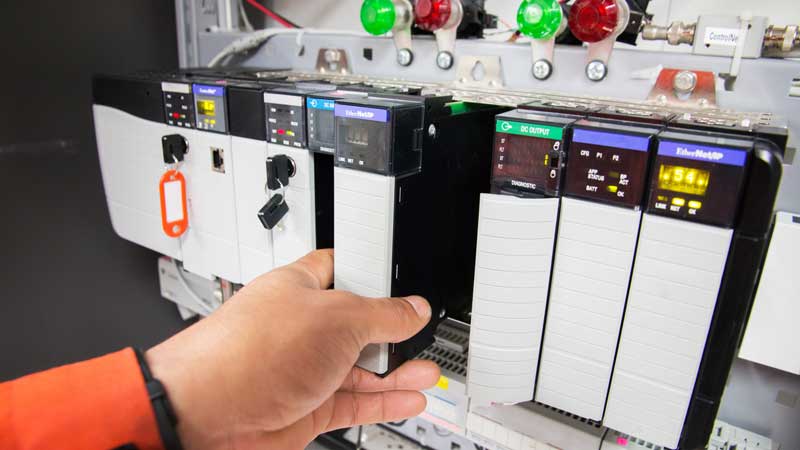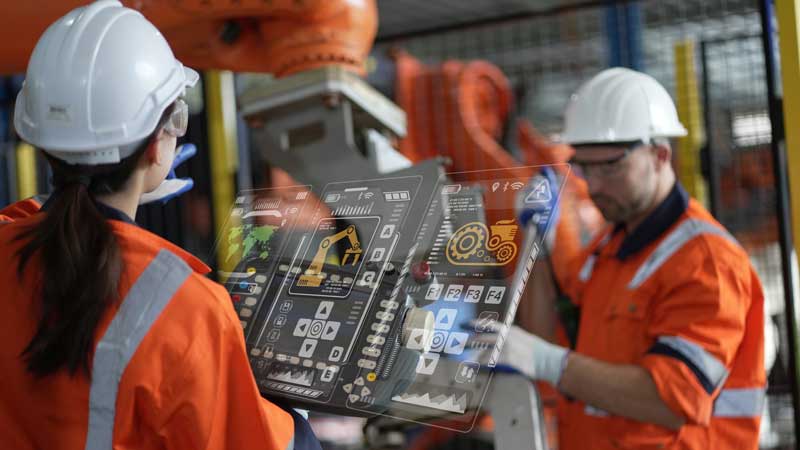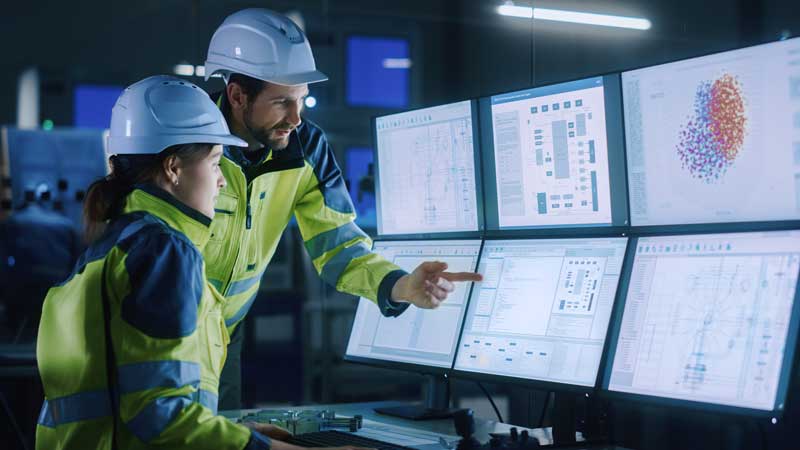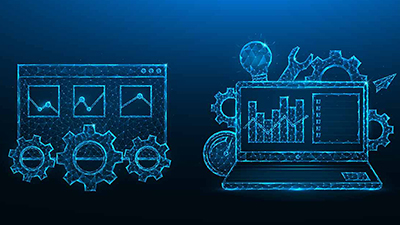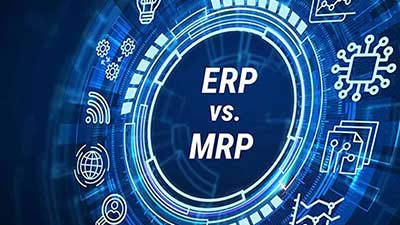PLC control system integration
Benefits, models, devices and systems
If you wonder how automated machinery, robots and processes are controlled, you're not alone. From physical equipment to electronic data, just what links operations to information? What "controls" industrial data so we can see it in real time?
The answer: a Programmable Logic Controller (PLC). But it wasn't always with us. It had to evolve. In Industry 3.0 (the automation revolution), machines and processes were controlled locally. This was because enterprise computing was often complex and expensive. To fix this, PLCs were developed. Essentially, they ARE the local control, and they operate with control logic commands.
As Industry 4.0 develops, so does the demand for PLCs. They will continue to control industrial processes as long as there is a need for fully connected, real-time communication.
What is a PLC?
Think of a PLC as an industrial computer with a programmable memory. Unlike a desktop computer, however, it uses real-time data to control automated manufacturing processes and activities. It can control sensors, motors, robots, assembly lines and drive belts, and the list goes on. A PLC is simple, fast and powerful.
Worldwide, PLCs have become indispensable. Newer ones are IT-friendly and have built-in security features so they can be used as edge devices. PLCs have the ability to take raw field data, process it and push it to an external platform. This allows businesses to make more informed decisions and to optimize operations to increase productivity.
How does a PLC work?
Compared to an older electromechanical relay system where a person flicks a switch to control a process or machine, a PLC uses electronics. It monitors inputs – such as operating temperature or machine productivity – and makes logical decisions for industrial processes. PLCs may use input data to start or stop a process or send a notification of malfunctions. A PLC is the heart of an Operational Technology (OT) network connecting process data and process equipment. Recent innovations merge aspects of Information Technology (IT) platforms and the internet into the traditionally ‘off-line’ OT.
Advantages of PLC integration
From unforeseeable supply chain obstacles to labor-force issues, businesses face numerous challenges. In order to meet goals for sustained growth, some are switching out older, less efficient processes for new ones, like seamless data integration.
A PLC offers many advantages, including:
-

Better communication – PLCs communicate with multiple computers to create a control network
-

Error elimination – PLCs detect issues and recommend ways to avoid them in the future
-

Greater flexibility – Processes can quickly be changed by reprogramming instead of rewiring
-

Cost effectiveness – A one-time investment cost vs. maintenance and repair of relay-based systems
-

Faster response rates – How fast? Microseconds. PLCs are made for real-time applications
-

Greater durability – PLCs resist varying temps, vibrations, impacts and humidity
-

More seamless operations – PLCs use logic to make better decisions sooner
-

A smaller footprint – PLCs have a small physical size and can control operations from one location
Programmable logic controllers are powerful industrial systems that control a variety of mechanical devices and applications. And, they’re just about everywhere – from factories and medical facilities to traffic signals and automatic car washes.
Types of control system integration
A big benefit that PLCs offer is the ability to work well with other automated systems. By connecting OT and IT systems, businesses can expand control over a wide variety of machines, processes and applications. For example, a PLC with data integration protocols can connect legacy machines with newer ones, then convey operational data to users in real time. Two common types of control systems a PLC can integrate with are Supervisory Control and Data Acquisition (SCADA) software and a Variable Frequency Drive (VFD).
SCADA
SCADA, or Supervisory Control and Data Acquisition, is a computer control system that monitors and controls processes on the factory floor. It’s basically software with a user interface. When used with a PLC, it can gather real-time data, process it, evaluate it, then display it for operators in a user-friendly format.
VFD
Another type of automation system that communicates with a PLC is a Variable Frequency Drive (VFD). A VFD controls the speed of an alternating current (AC) motor, either speeding it up or slowing it down. This contrasts with a PLC, which outputs a signal that can cause a motor to turn on or off. Together, a PLC and a VFD have even more advanced capabilities, and can combine to form a predictive maintenance program.
PLC integration options
Today, PLCs can gather manufacturing system data faster than ever before – and they are even better when used with other systems. Users can see critical information, and make informative decisions about their operations.
File Transfer Protocol
PLCs are constantly logging data and pushing it to cloud-connected computers. They use file transfer protocol (FTP), which is ideal for bulk transactions.
MQTT
Messaging queuing telemetry transport (MQTT) is gaining popularity for PLC-to-cloud communications. This method uses a broker for outbound messages for added security. The PLC pushes messages to the broker, which can be local or in the cloud. MQTT communications are a safe and fast way to operate.
Rest API
Some PLCs offer a representation state transfer (REST) application programming interface (API). This offers outside users, say a client, the ability to request data from the PLC. The PLC would then gather the data from its memory and provide it in an easy-to-read format.
Industrial control solutions and applications
When hardware, software and connectivity are used to support production activities, it’s known as an industrial control system (ICS). Though these control systems differ in size, all receive data from remote sensors, compare it to preprogrammed setpoints, then use command functions to control manufacturing processes. This includes, but is not limited to, a PLC. A more comprehensive list of options includes:
This is the most simple type of control system with a single control loop. Usually these are mounted on a panel and controlled manually by an operator. Today, most of these systems use electronics instead of manual operation.
A DCS contains multiple control loops and is used to manage large, complex industrial processes. An entire system consists of computers, controllers and sensors distributed across a plant. They communicate through a centralized computer, and are customizable and cost effective. A DCS receives input from sensors, processes it, then decides what action needs to be taken.
DCS applications
- Nuclear power
- Chemical and metallurgical plants
- Automotive
- Food processing
- Pharmaceutical
- Water and sewage
- Environmental monitoring
PLCs can either be small with very few inputs and outputs, or large with thousands. The larger ones are often tied to networks consisting of multiple PLCs and SCADA software systems.
PLC applications
- Safety control systems
- Escalators
- Elevators
- Newspaper and book production
- Washing machines
- Traffic signals
RTUs are a type of industrial control system that uses a microprocessor to connect hardware to software such as SCADA. It receives sensor data, which is transmitted through a control loop.
RTU applications
- Offshore platforms
- Oil wells
- Water supply
- Wastewater collection
- Air quality monitoring systems
An IACS system is a number of devices (mechanical, electromechanical) that control, monitor and activate processes using machine sensors, smart devices, hardware and software. Data from sensors turns into control outputs.
IACS applications
- Automotive
- Facility management
- Motor controls
- Transportation
Intelligent Electronic Devices use electronics to control processes. They have microprocessors, so they have robust communication and monitoring capabilities. IEDs use Ethernet to communicate and are part of other control systems like SCADA and DCS.
IED applications
- Sewage and water treatment plants
- Food processing
- Automotive
- Mining
- Pharmaceutical manufacturing
PLC integration with an intelligent manufacturing ecosystem
For businesses looking to unlock the next level of productivity, PLCs are essential. They integrate with other systems to form an entire Intelligent Manufacturing Ecosystem. Brady intelligent solutions work with PLCs to bridge IT and OT systems and automate data processes. The right tools – high-performance printers, scanners, materials, software and hybrid cloud architecture – can make this happen.
IT/OT Convergence – A PLC can help bridge the real-world of operational technology with information technology. It stores data and communicates information, which is the lifeline of many businesses.
Edge Automation/Computing – A PLC allows businesses to process data closer to where it is generated. With a PLC, the work goes faster, even with higher volumes. This can lead to better decisions being made in real time.
Data Automation – A PLC can help optimize operations by connecting devices to communication networks. It gathers data in operations, stores it, then transmits it to the cloud for greater accessibility.
